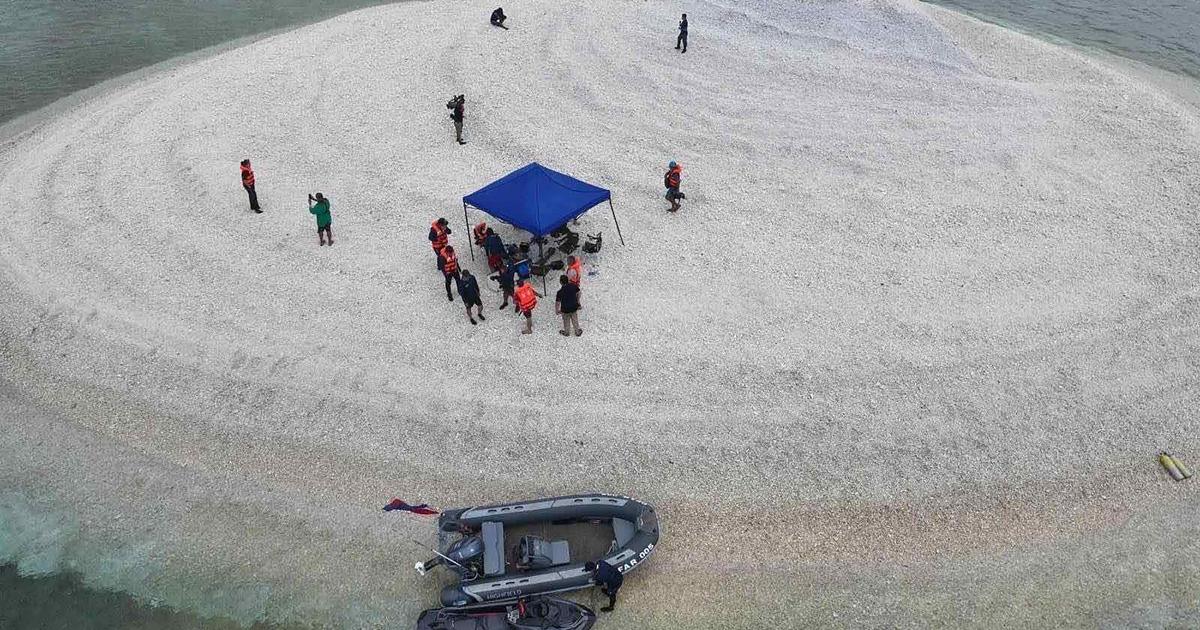The presentation of the images of the tragedy in Melilla by a Civil Guard command to a group of deputies from the Interior Commission has revealed new details about what happened.
The description that the parliamentarians have made of the recordings coincides with the one made by EL PAÍS and Cadena SER on November 7, but the lieutenant colonel in charge of the Melilla command has given his version of the facts beyond what is see in the videos.
In his explanations there are some new data, among them that the Moroccan agents were in charge of clearing the entire border post alone and that the Spanish authorities were only informed that there were deaths when they re-entered the compound, after 1:00 p.m., more than four hours after the deadly stampede.
At least 23 people died that day.
The Spanish cameras begin to record the descent down the mountain of a group of about 1,700 people around seven in the morning.
One of the issues that has been put on the table is that there was no "early warning" by the Moroccans of what was going to happen, as explained by the PP deputy Ana Vázquez.
More information
EDITORIAL: About the Melilla tragedy
The journey from the mountain to the border has not interested the deputies much, who preferred to focus on the arrival at the border post of Barrio Chino, which happens at 8:18.
Once inside the border post, where hundreds of people are gathered, there is a continuous rain of tear gas and smoke canisters against the refugees.
They throw stones and sticks at the Moroccan agents who remain outside the compound, blocking the exit.
They also throw some sticks and stones at the civil guards who are under the fence or on the Spanish controlled side of the post.
It has drawn the attention of some deputies that the civil guards, in addition to spraying with pepper spray, also threw stones at the group.
During the viewing, the command defended the actions of the agents, which they described as "defensive" against the group's violence.
Enrique Santiago, spokesman for Unidas Podemos, has publicly attributed "some violent situations" to the desperation of the refugees.
The critical moment occurs at 8:42, when the group manages to force the first gate that gave access to Spain.
At that moment, the Moroccan agents are also seen entering the border post.
The refugees rush to the gate and a deadly funnel ensues.
A crowd of dozens of people forms between one side and the other of the door.
None of the deputies has doubted that the people who were trapped in that stampede also fell on soil under Spanish control.
The ministry has denied that this area can be considered Spanish.
Until that moment, as the Civil Guard command explained to the deputies, there had been no direct communication with the Moroccans.
That first contact occurs at 8:53 a.m., he assured, at the same entrance door to the border post in Melilla.
At that time, the Spanish agents were already trying to contain hundreds of people who had managed to enter Melilla.
The official affirmed that the Moroccans offered to enter the autonomous city to help the Civil Guard to stop the entry of the group, but that the offer was rejected.
After the avalanche, the refugees who are not trapped run, climb fences and roofs and try to get into Melilla.
Several hundred get it.
Around 50, as the officer explained, stayed on the roofs on the Spanish side to throw stones.
A way of sacrificing their entry into Spain, he said, to make it easier for the rest to get there.
The lieutenant colonel assured that they were "perfectly organized" and that "they had never seen anything like this."
At this time, the Civil Guard asked the Moroccans to access the roofs to clear them.
To do this, they opened the lock on the door that gave access to the roof.
The Moroccans finally entered Melilla to help with the hot returns, also at the request of the Civil Guard.
A Spanish agent and a Moroccan soldier coordinated this operation, according to the civil guard.
Sending 470 people back to Morocco, even without legal proceedings, as the Ombudsman pointed out, was “slow”.
It lasted from 9:30 a.m. to 11:00 a.m. At 11:15 a.m., the officer explained, there was no one left in the autonomous city.
It did remain in the corridors through which people were returned, there were still quite a few refugees sitting or lying down there.
The high command assured that the last communication with their Moroccan colleagues was around 1:00 p.m., when they were informed that there were dead people.
The agents did not enter the area where the avalanche occurred until "one thirty" that afternoon, more than four hours after the event.
So, the entire Spanish part was already clear.
After the last communication in person with the person in charge of the Moroccan device, he waited for the Moroccans to finish "organizing" and called the maintenance company to fix the two broken doors.
At five in the afternoon, the Spanish zone looked as if nothing had happened.
Subscribe to continue reading
Read without limits
Keep reading
I'm already a subscriber


/cloudfront-eu-central-1.images.arcpublishing.com/prisa/ACVHT3PX6JCUJNS4ST4ZY7FO6I.jpg)
/cloudfront-eu-central-1.images.arcpublishing.com/prisa/ARKKQ6UR5JG37ANJ7FYJ6OW6VM.jpg)


/cloudfront-eu-central-1.images.arcpublishing.com/prisa/6N47OZLMGVAU7LZSL6XCH3IHDE.jpg)

